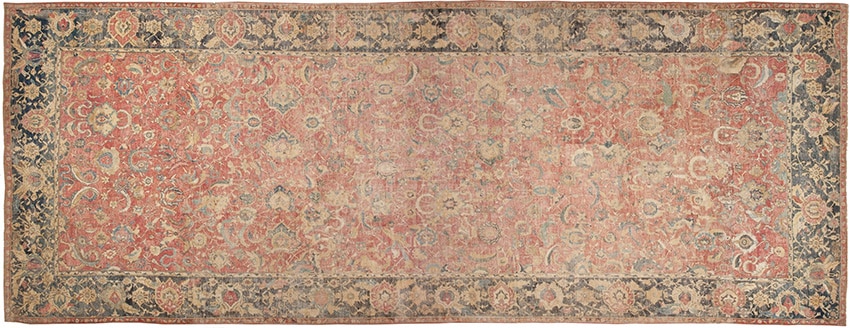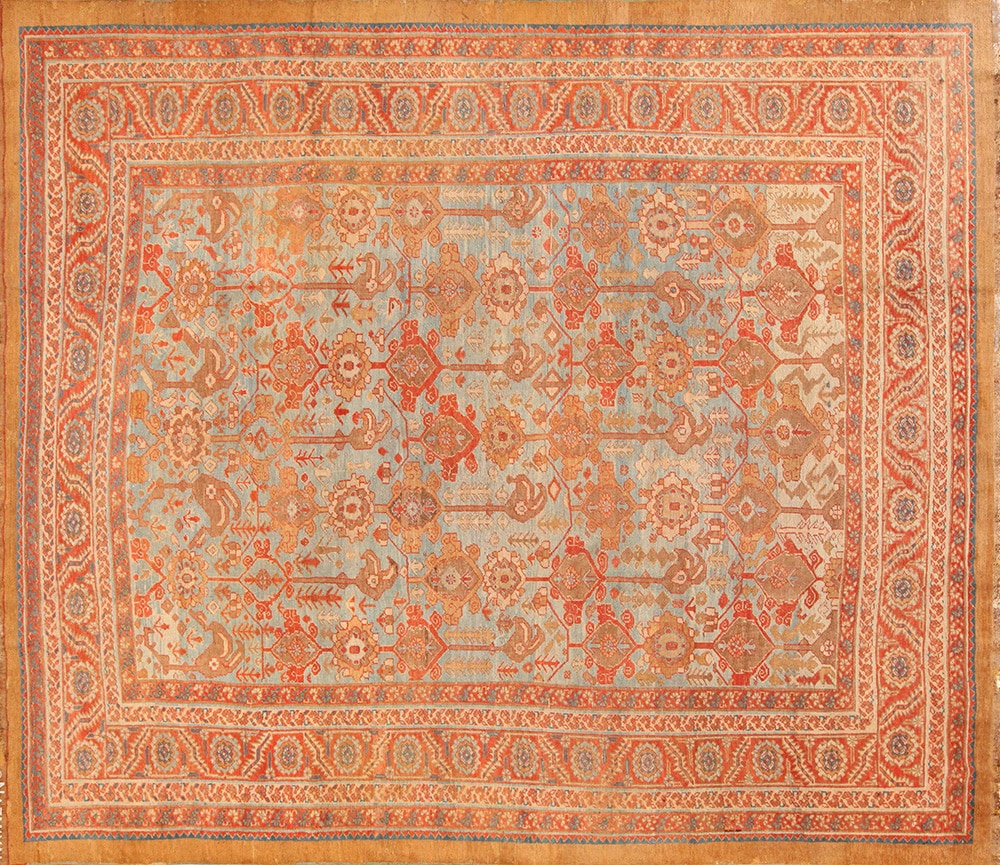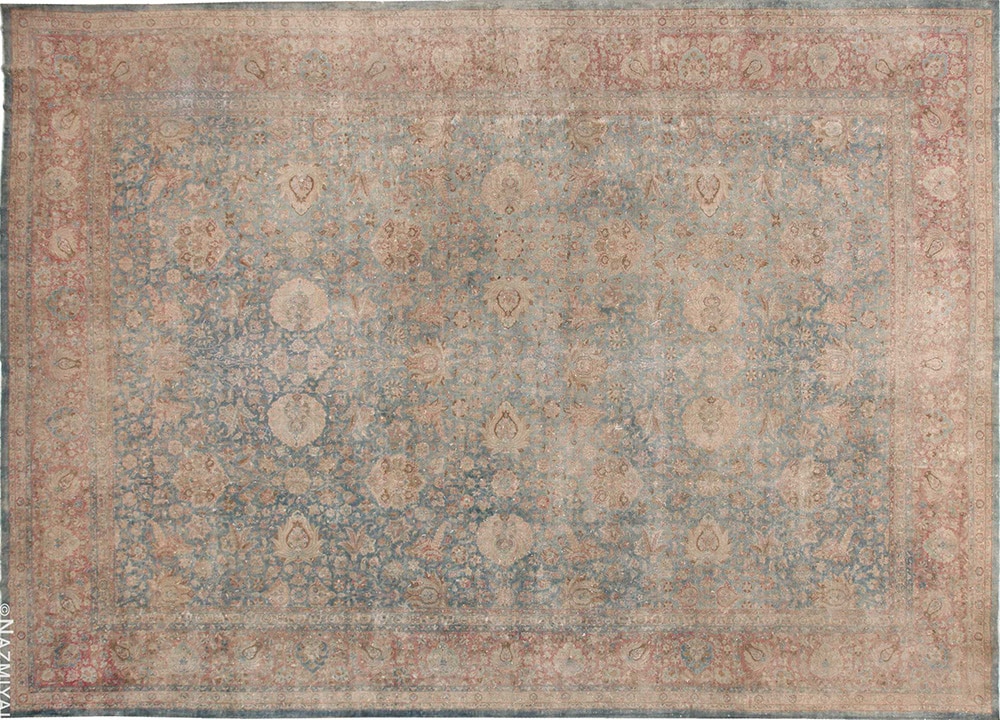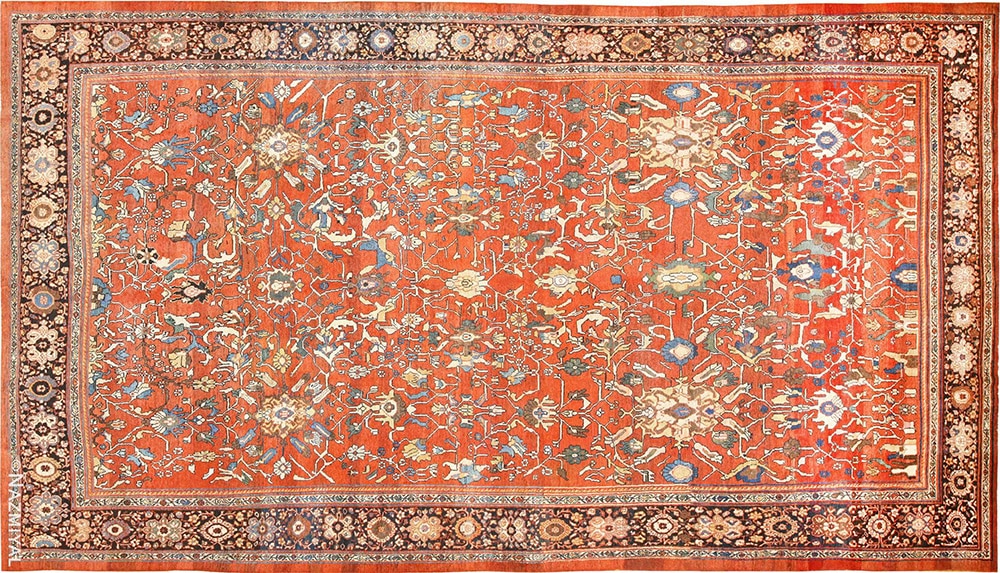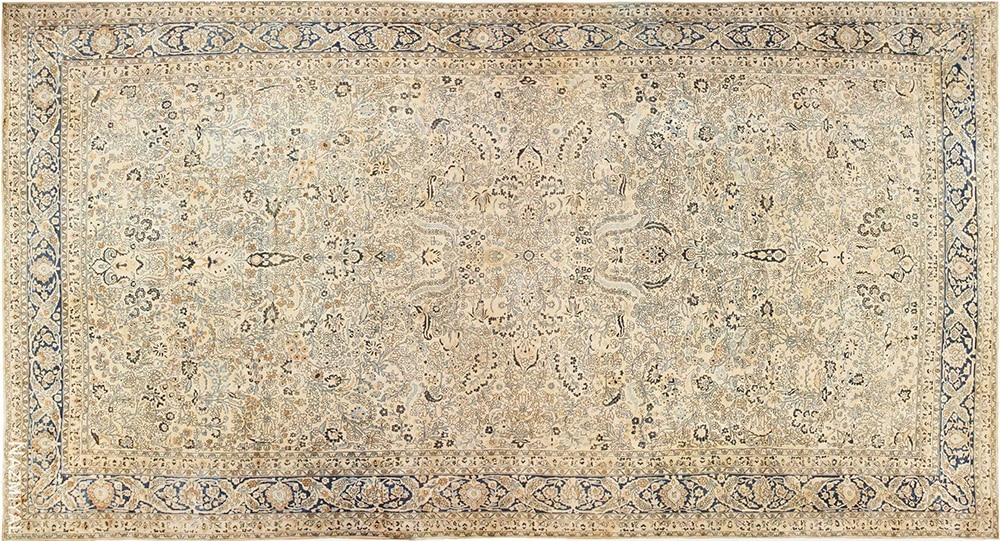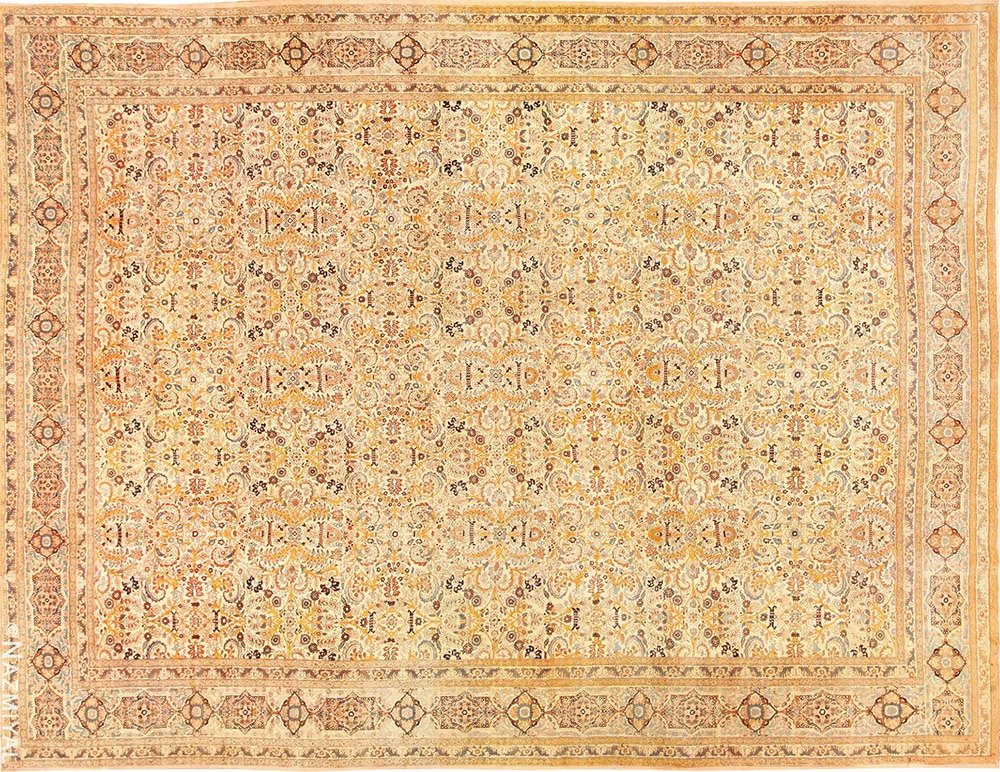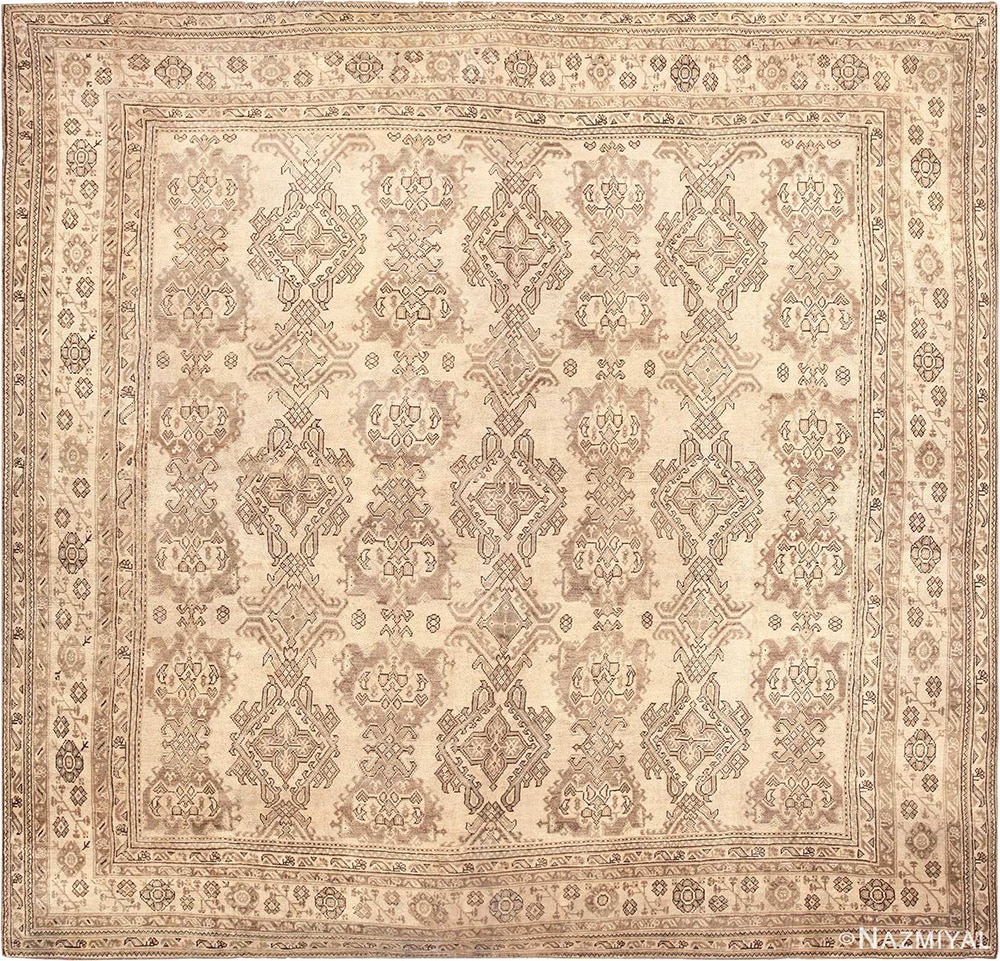Learning About The Middle East And Middle Eastern Rugs
Before we delve into the specific topic of Middle East rugs, lets first take a moment to understand what the Middle East is and is not.
Where Is The Middle East Located And What Countries Are Considered “Middles Eastern?
Located in Western Asia, the Middle East is what many consider to be a transcontinental region. This region is comprised of the following 18 countries: Egypt, Iran, Turkey, Iraq, Saudi Arabia, Yemen, Syria, Jordan, United Arab Emirates, Israel, Lebanon, Oman, Kuwait, Qatar, Bahrain.
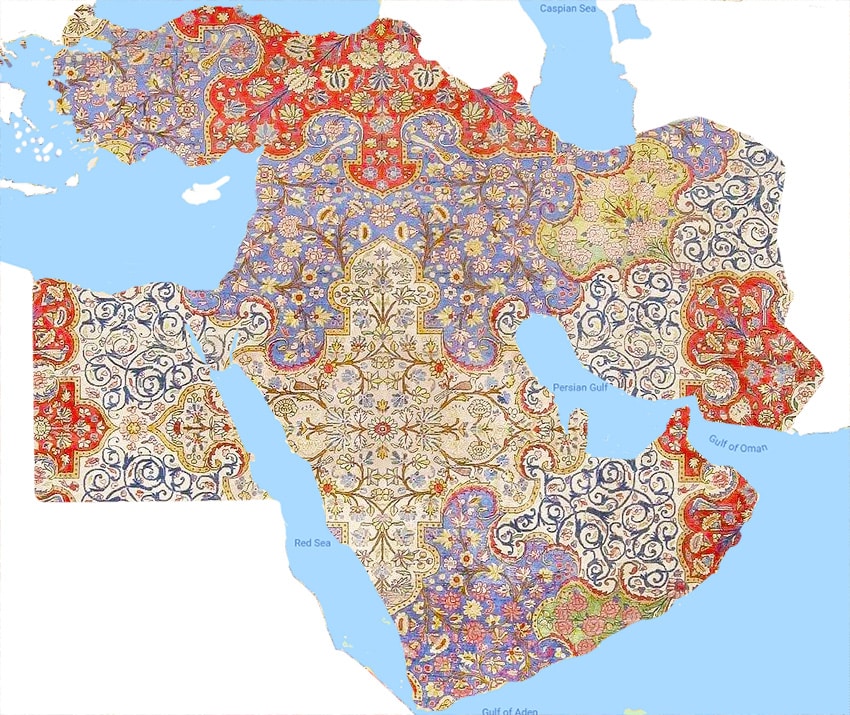
Middle East Rugs
Who Lives In The Middle East?
The largest ethnic groups that inhabit the Middle East are the Azeris (not including Azerbaijan), Kurds, Persians, Turks and Arabs. Indigenous Middle Eastern minorities include Samaritans, Jews, Assyrians, Arameans, and Lurs among others. The Middle East has a Romani community along with ethnic European groups that form a diaspora including Greeks, Crimean Tatars, Albanians and Bosniaks.
Additional migrant populations include Sub-Saharan Africans, Afghans, Pakistanis, Indonesians, Filipinos, Chinese, Bengalis and other people of Indian descent.
What Is The History / Historical Significance Of The Middle East?
Middle Eastern history dates as far back as ancient times. The region’s geopolitical importance has been recognized for thousands of years with a few of the major religions originating in the Middle East such as Islam, Christianity, and Judaism.
Origin Of The Term “Middle East”:
The term “Middle East” originated sometime during the 1850’s. It became well known when Alfred Thayer Mahan, a naval strategist, used it to describe the area that’s between India and Arabia. The Russian and British empires vied for influence over Central Asia in a rivalry otherwise known as “The Great Game”.
Mahan realized the strategic importance of the Middle East. That is in addition to the Persian Gulf, which is at the center. As a result, the area that surrounds the Persian Gulf became known as the Middle East. Mahan believed it was an essential passage for Britain to take control of. That is because it would stop the Russians from advancing towards British controlled India. In September of 1902, the Middle East term was used for the very first time in an article published by Mahan in a British journal called “The National Review” and was reprinted several months later in “The Times”.

Middle East Map
In October of that same year, a series of 20 articles were written by Sir Ignatius Valentine Chirol. He expanded upon the definition of the Middle East to include regions of Asia that extended toward the borders of India.
Prior to World War II, areas that were centered around the Mediterranean’s eastern shore and Turkey were known as the “Near East.” The “Far East” referred to the general area of China and the sounding countries while the “Middle East” included the area from Burma to Mesopotamia which is the area in between the Far East and Near East.
Toward the end of the 1930’s, the Middle East Command was established by the British in Cairo for their military. After this, the USA and Europe began using the term. The Middle East Institute was also founded in 1946 in Washington, DC.
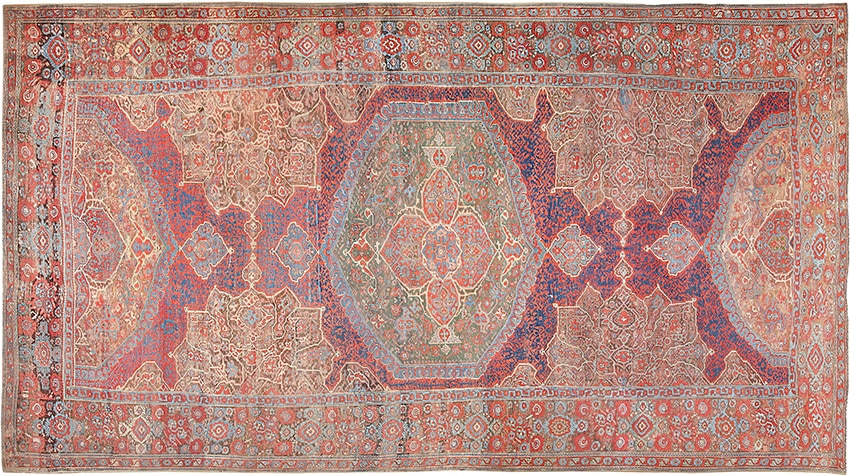
Turkish Antique Smyrna Oushak Middle East Carpet 47072 (sold)
There has been some confusion over the description of “Middle” due to changing definitions. Before World War I, “Near East” was used in English in reference to the Ottoman Empire and the Balkans. The “Middle East” back then, still referred to Turkestan, Central Asia, Afghanistan, the Caucasus, and Iran. The “Far East” referred to the Eastern Asian countries of Korea, Japan, and China.
The Ottoman Empire disappeared in 1918 which significantly changed the definition of “Near East” to the point where the term was no longer used in everyday English. However, “Near East” is still being used in academic disciplines such as ancient history and archaeology to describe an area that’s similar to the term “Middle East” used today. The usage of “Middle East” was then being applied to re-emerging Islamic countries.
The U.S. government began to officially use the term “Middle East” for the first time in 1957. This was during the Eisenhower Doctrine and was in reference to the Suez Canal Crisis. The Middle East was defined by then Secretary of State John Foster Dulles as a much larger area that lies between and including Pakistan on the eastern side and Libya on the western side, Iraq and Syria on the northern side, the Arabian Peninsula on the southern side, and Ethiopia and Sudan.
The State Department went one step further in 1958 when they stated that the terms for “Middle East” and “Near East” were both interchangeable. Once again, the region was redefined as including Qatar, Bahrain, Kuwait, Saudi Arabia, Iraq, Jordan, Lebanon, Israel, Syria, and Egypt.
In addition, an Associated Press book states that the Near East once referred to countries that were “farther” to the west (from Europe). While the Middle East referred to the more eastern countries. Today, both are now synonymous.
As you can see from the above, the definition of the “Middle East” has changed radically over the years. But in today’s world, the middle east has come to mean the area that includes these countries: Egypt, Iran, Turkey, Iraq, Saudi Arabia, Yemen, Syria, Jordan, Dubai / United Arab Emirates, Israel, Lebanon, Oman, Kuwait, Qatar, Bahrain. Nothing more and nothing else. At least for now.
What Are Middle East Rugs?
Now that we know what the term “Middle East” means, we can inference that all Middle East rugs are those carpets that were woven in any of the Middle Eastern countries. While most of the iconic antique rugs came from this region, not all the countries produced rugs.
That said, the most iconic of all the Middle Eastern rugs are:
While not all the countries had developed rug weaving industries, some, like Syria, were recognized for their magnificent textiles.
Even though most of the Middles Eastern rugs were produced in just a handful of countries, the Middle East in general has one of the most quality driven rug buying markets in the world. The people in the middle east are great lovers of the woven arts and as such, has always coveted the finest examples of area rugs.
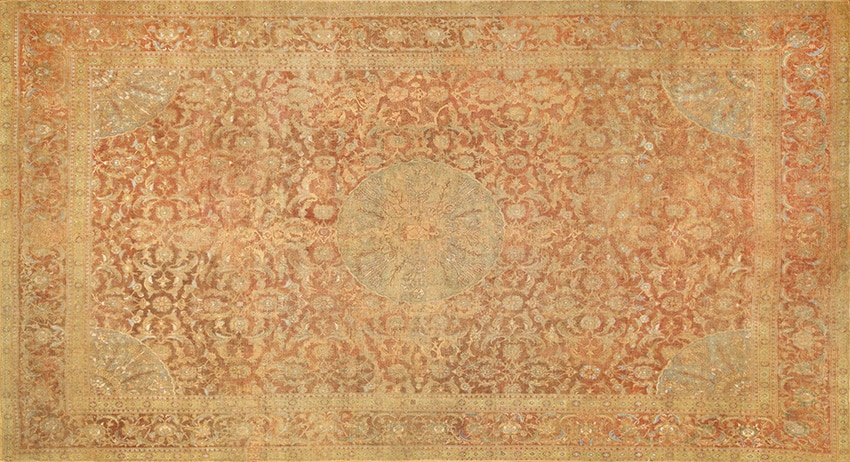
16th Century Egyptian Cairene Middle East Rug #3222
This region is where most of the extremely fine silk rugs and some of the finest wool rugs that exist anywhere in the world. This is because the people that live in the Middle East demand the finest quality rug knotting / KPSI and are willing to pay the price that these rugs demand.
Here are just some of our favorite antique rugs that were woven in the middle east:
This rug blog about Middle East rugs was published by Nazmiyal Antique Rugs in NYC.


